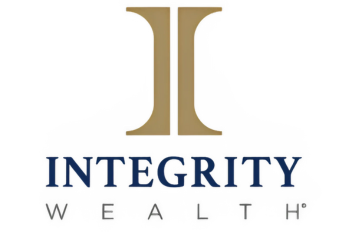Retirement Planning: Essential Steps for a More Secure Financial Future

Retirement planning is an essential part of securing your future and achieving financial independence. It's vital to understand how to balance saving and investing to ensure your retirement funds last through your golden years. By taking the right steps today, you can prepare for a comfortable and worry-free retirement.
Starting with clear goals and a timeline is key to an effective retirement plan. Evaluating your expected expenses, understanding tax advantages, and choosing the right investment vehicles are all crucial parts of this process. Regularly reviewing and adjusting your plan may help you stay on track despite life's changes.
Choosing the right professional guidance can make a significant difference in your retirement planning. While no single approach fits everyone, aligning your plan with your personal needs and circumstances helps create a strategy that may endure the test of time.
Key Takeaways
- Set clear goals and timelines for retirement.
- Choose suitable investment vehicles and adjust as needed.
- Consider professional advice tailored to personal needs.
Understanding Retirement Planning
Retirement planning revolves around saving money for your future and ensuring you have enough funds when you stop working. It involves setting goals, understanding when you want to retire, and preparing financially.
Retirement Planning Basics
Retirement planning involves creating a financial strategy to support yourself when you no longer work. It includes deciding on savings, investments, and possible retirement accounts like IRAs or 401(k)s. These accounts often offer tax advantages that can help grow your savings over time.
It also requires understanding your living expenses post-retirement. You will need to calculate how much money you'll need monthly for housing, food, healthcare, and leisure. It's crucial to consider inflation and how it may impact costs in the future.
Importance of Starting Early
Starting retirement planning early can offer significant benefits. When you begin investing at a younger age, you have more time to take advantage of compound interest. This means your investments may grow at a faster pace, increasing your retirement savings significantly over time.
Starting early also allows for more flexibility in your saving plans. If circumstances change, like an unexpected expense, you may have more time to adjust your plan. Even starting with small, regular contributions can build substantial savings over decades.
Setting Retirement Goals
Setting clear and realistic retirement goals is essential. You should consider what lifestyle you want, where you plan to live, and any travel or activities you'd like to pursue. These factors help you determine how much money you'll need to save.
It's important to regularly review and adjust these goals as your life circumstances change. For example, health issues or changes in your career may prompt adjustments. A well-defined plan with specific milestones can guide your saving and investing actions effectively.
Retirement Age Considerations
Deciding on your retirement age is a personal choice that impacts your planning. The full retirement age (FRA) varies depending on your birth year, often influencing your pension or Social Security benefits.
Retiring earlier than your FRA may reduce benefits, while delaying retirement could increase them. It's important to weigh these options along with personal factors like health, job satisfaction, and family needs. Always base decisions on comprehensive research and ideally seek advice from a financial planner.
Retirement Savings and Investment Vehicles
To plan for retirement effectively, it's essential to consider different savings and investment vehicles. These vehicles can include employer-sponsored plans, various types of IRAs, and annuities. Each option carries its unique features that could match different financial situations. Understanding these can help you make informed decisions.
Types of Retirement Accounts
Many retirement accounts have tax advantages that could benefit you in the long run. Common types include Traditional IRAs , Roth IRAs , and 401(k)s . Each has its benefits, like tax-deferred growth or tax-free withdrawals. It's important to know how contributions, withdrawals, and taxes work for each account type.
A Roth IRA, for example, allows tax-free withdrawals in retirement, while contributions are made with after-tax dollars. Traditional IRAs and 401(k)s, in contrast, defer taxes until withdrawal, which may be beneficial if you expect to be in a lower tax bracket later.
Employer-Sponsored Plans
401(k)s and 403(b)s are popular employer-sponsored plans that could offer matching contributions. This match can significantly boost your retirement savings if offered by your employer. You contribute part of your salary, which may reduce your taxable income.
These plans often have higher contribution limits compared to IRAs, allowing you to save more. Additionally, funds in these plans are typically invested in a range of options from stocks to bonds, guided by plan rules. It's important to review the plan and assess employer contributions and fees.
Individual Retirement Accounts (IRAs)
IRAs can be beneficial for those looking to save independently. Traditional IRAs offer tax-deferred growth, meaning you pay taxes when you withdraw the money in retirement. Roth IRAs , on the other hand, use post-tax money, allowing tax-free withdrawals later.
The choice between these accounts depends on current tax circumstances and future projections. IRAs have contribution limits set by the IRS, which may change annually. Evaluating your income level and retirement strategy will help you decide which type aligns best with your goals.
Annuities and Other Investments
Annuities provide a steady income stream in retirement and can be an option to consider once you've utilized tax-advantaged accounts. They come in two main types: fixed and variable Annuities¹ ². Fixed annuities offer a guaranteed payout, while variable annuities depend on investment performance.
Other investments, like mutual funds and stocks, can also be part of your retirement plan. These can offer growth potential but carry more risk. Combining annuities with other investments could diversify your portfolio. Each financial tool should be tailored to meet your personal retirement needs and risk tolerance.
Investing for Retirement
Investing for retirement involves making thoughtful choices about where to allocate your money. Key aspects include understanding different strategies, assessing risk, and recognizing the roles of various investment options such as stocks, bonds, mutual funds, and ETFs.
Investment Allocation Strategies
When planning your retirement investments, diversification is vital. This means spreading your money across different assets to balance potential risks and rewards. Your asset allocation should align with your financial goals and the time frame until retirement.
Typically, a mix of stocks, bonds, and cash is used. Stocks might offer growth, bonds may provide stability, and cash ensures liquidity. As you approach retirement, shifting towards more bonds and cash might reduce risk, since they are generally less volatile than stocks. Your personal circumstances and risk tolerance should guide these adjustments.
Understanding Risk Tolerance ³
Risk tolerance refers to how much risk you are comfortable taking with your investments. This often depends on your financial situation, age, and investment goals. Younger individuals might be more willing to invest in higher-risk assets, like stocks, as they have more time to recover from potential losses.
Use risk assessment tools or consult with a financial advisor to better understand your comfort level. Striking the right balance between risk and potential reward can help keep your emotions in check during market fluctuations. Remember, investments involve risks, and past performance does not predict future results.
The Role of Stocks and Bonds
Stocks and bonds both play key roles in a retirement portfolio. Stocks may offer the potential for higher returns over time, helping your investments grow. Bonds can provide a steady income stream and are generally considered less risky.
A common strategy involves a combination of both. For instance, if you have a long time until retirement, you might favor stocks for growth potential. As retirement nears, increasing bond holdings can offer more stability. The balance between stocks and bonds should reflect your risk tolerance and investment horizon.
Using Mutual Funds and ETFs⁴
Mutual funds and ETFs offer a way to invest in a diversified portfolio without buying each security individually. Mutual funds are actively managed and can adjust their portfolios to align with investment objectives. ETFs trade like stocks on an exchange and often track a specific index, which keeps costs low.
Both options provide diversification and are accessible for many investors. Costs, such as expense ratios and transaction fees, should be considered. Evaluate whether you prefer a hands-on approach or a more passive strategy. Deciding between mutual funds and ETFs can depend on your investment preferences and timeframe.
Maximizing Retirement Contributions
To effectively build your retirement savings, it is important to understand how contribution limits, catch-up provisions, employer match programs, and automatic contribution increases can impact your savings. Making informed contributions to your retirement accounts can lead to significant long-term benefits.
Contribution Limits and Catch-Up Provisions
Each year, there are limits to how much you can contribute to retirement accounts like a 401(k). In 2024, the contribution limit for a 401(k) is $23,000 .
If you're 50 or older, you can make catch-up contributions , which allow you to invest an additional $7,500 . These extra contributions can help grow your retirement savings more quickly as you approach retirement age.
Understanding how these limits work means you can maximize possible tax advantages. Keep track of current IRS guidelines, as they may change annually. Always consider your financial situation when utilizing these provisions.
Benefits of Maxing Out Contributions
Maximizing your retirement contributions can offer tax benefits . Contributions may lower your taxable income, which can result in paying less in taxes now.
Additionally, investing more now can potentially mean having more in retirement savings later. This can reduce financial stress during retirement. Consider your personal goals and retirement plans when deciding how much to contribute. An increased contribution may lead to better preparedness for unforeseen expenses upon retiring.
Employer Match Programs
Many employers offer a 401(k) match , meaning they contribute additional funds to match part of what you contribute.
This can be equivalent to a percentage of your salary. Not taking advantage of this is like leaving free money on the table.
To benefit, contribute enough to your 401(k) to meet your employer's match. For instance, if your employer matches contributions up to 5% of your salary, try to contribute at least that amount to benefit fully from the program.
Automatic Contribution Increases
Setting up automatic contribution increases can help you gradually save more without a significant immediate financial impact.
This feature allows your contributions to increase automatically by a certain percentage or amount yearly. It's a practical way to boost savings if you find it hard to increase contributions manually.
Speak with your employer or plan provider to see if this option is available. It can be a simple way to help grow your retirement savings over time.
Retirement Income Planning
Planning for retirement income involves understanding your income needs, identifying potential income sources, and applying strategies to manage these effectively. These steps help create steady income streams as you transition from work life to retirement.
Determining Retirement Income Needs
When planning for retirement, assess how much income you will need to maintain your lifestyle. Consider current expenses such as housing, healthcare, and daily living costs, and account for potential changes over time. Inflation, healthcare costs, and lifestyle changes can impact these calculations.
Create a budget to track expected expenses, ensuring your income sources can meet these needs. This process aids in identifying any shortfalls and taking proactive steps to address them. Consulting a financial advisor can provide personalized insights tailored to your situation.
Projected Income Sources
Identify potential sources of income during retirement. Common income sources include:
- Pensions : If applicable from previous employment.
- Social Security : Based on your earnings history.
- Savings and investments : Such as 401(k) plans, IRAs, and other assets.
Estimate how much income each source may provide. Consider diversifying income streams to manage risks associated with relying heavily on a single source. This diversified approach can help ensure a more balanced financial plan throughout your retirement years.
Social Security Benefits⁵
Social Security benefits play a crucial role in retirement income. These benefits depend on your earnings record and the age you start claiming them. You can begin receiving them as early as 62, but waiting until full retirement age, or even delaying until 70, can increase monthly payments.
Understand how claiming age affects your benefits, and evaluate your personal situation before deciding. Keep abreast of current Social Security rules and changes. A qualified professional can help ensure your Social Security strategy aligns with your retirement income goals.
Implementing the 4% Rule
The 4% rule is a popular guideline suggesting withdrawing 4% of your retirement savings annually to help maintain your retirement income over time. This rule assumes a balanced portfolio of stocks and bonds, offering a mix of growth and income.
While it provides a starting point, the 4% rule is not foolproof. Markets can fluctuate, affecting your savings' longevity. Consider adjusting the withdrawal rate based on current market conditions and personal circumstances. Tools like retirement calculators may assist in customizing your withdrawal strategy.
Tax Planning and Retirement
When planning for retirement, tax considerations are crucial. You must understand tax advantages, implications of withdrawals, how income taxes work, and consider potential Roth conversions.
Tax Advantages of Retirement Accounts
Retirement accounts like 401(k)s and IRAs can offer significant tax benefits. Traditional IRAs allow you to contribute pre-tax dollars, potentially reducing taxable income. This may lower the taxes you owe yearly. Roth IRAs , on the other hand, use after-tax contributions. While you don't reduce your current taxes, qualified withdrawals in retirement can be tax-free.
Employer-sponsored plans like 401(k)s often include matching contributions. This increases your retirement savings without extra tax burden immediately. Understanding these tax advantages enables you to strategically choose accounts aligning with your long-term objectives.
Planning for Taxes on Distributions
As you withdraw from retirement accounts, it's important to know the tax consequences. Withdrawals from traditional IRAs and 401(k)s count as taxable income. This means they may raise your tax bracket during retirement. Plan distribution timing to manage tax effects.
Roth IRA distributions are more flexible. Because contributions were already taxed, qualified withdrawals from Roth accounts are generally tax-free. This can be advantageous if you expect higher income levels in retirement. Careful planning around when and how to take distributions can help minimize your overall tax burden.
Understanding Income Tax in Retirement
Understanding how income is taxed after retirement is key. Social Security benefits might be taxed if you have additional income. The IRS calculates this based on combined income, which includes half of your Social Security, plus other retirement income. Knowing this is crucial, so you can better plan your retirement income streams.
Remember that investment gains, such as capital gains or dividends, can also be taxed in certain cases. Balancing these various sources and understanding their tax implications helps create a stable financial plan for your future.
Roth Conversion⁵ Strategies
A Roth conversion involves moving funds from a traditional IRA to a Roth IRA. This could result in paying taxes on the converted amount, but it may have long-term benefits. This strategy can be favorable if you anticipate being in a higher tax bracket later.
Roth conversions can create a tax-free income stream if done correctly. Considering converting funds gradually over several years might be beneficial to avoid a large tax impact in any single year. The decision to convert should be tailored to your specific situation, considering both current tax rates and future goals. Consulting with a professional is advisable to understand all potential outcomes.
Healthcare and Retirement
Planning for health care during retirement involves considering several key areas. Understanding Medicare options, estimating potential medical expenses, and planning for long-term care are crucial steps. Each aspect can significantly impact your retirement strategy.
Medicare and Supplemental Plans
Medicare is a federal health insurance program for people aged 65 and older. It covers hospital stays, doctor visits, and some prescriptions. However, Medicare does not cover everything. You might need additional coverage to fill the gaps.
Supplemental plans, like Medigap or Medicare Advantage, can help. These plans vary widely in coverage and cost. Choosing the right plan depends on your health needs and budget.
Medicare Advantage Plans often include extra benefits such as vision and dental care, but may have more restricted networks of doctors. Medigap supplements Original Medicare, covering additional costs like copayments and deductibles. Compare plans carefully, considering both current health care needs and potential future expenses. Consult with a licensed Medicare advisor to find the best fit for your situation.
Estimating Medical Expenses
Estimating medical expenses in retirement can be complex. Factors like age, health, and location affect costs. On average, a retired couple might need hundreds of thousands of dollars for health care.
Start by examining current health conditions and considering potential changes. Pre-existing conditions may increase future costs. Use online calculators or speak with financial planners for a personalized estimate.
Consider routine expenses, such as prescriptions and doctor's visits, and unexpected costs like surgeries. Also, remember inflation. Medical costs typically rise faster than general inflation. Build a flexible budget that accommodates these rising expenses. Preparing a detailed estimate helps in setting realistic financial goals and minimizing surprises during retirement.
Planning for Long-Term Care
Long-term care refers to services that help with everyday activities, like bathing and dressing, usually required when living independently becomes difficult. This can be an expensive part of retirement planning.
Long-term care insurance might be worth considering. It covers services like home care and nursing home care, reducing the financial burden on savings. Options and costs for such insurance vary, so it's wise to shop around and evaluate policies closely.
Family support and community services can also complement formal care. Discuss your long-term care preferences with your family and consider setting up legal directives to guide care decisions if you are unable to make them yourself. Including these elements in your retirement plan ensures you are better prepared for future health care needs.
Estate and End-of-Life Planning
Estate and end-of-life planning is vital for ensuring your assets are managed according to your wishes. Developing a solid plan can help reduce stress for loved ones and provide peace of mind.
Creating a Comprehensive Estate Plan
An effective estate plan is more than just a will. It may include various components like power of attorney, living wills, and trusts. Begin by listing all assets, including property, investments, and insurance policies. Consider potential future expenses, such as taxes and medical costs. You might also want to appoint an executor to manage your estate. Keep documents up to date, adjusting them as your life circumstances change. Consulting with an estate planning attorney can provide guidance, ensuring your plan aligns with legal requirements.
Navigating Wills and Trusts
A will outlines how you want your estate distributed after your death. It may cover special bequests, such as sentimental items or specific monetary gifts. A trust, on the other hand, can help manage assets during your lifetime and beyond. Trusts might offer benefits like privacy and potential tax savings. They can specify conditions for distributions, which is useful if you want to provide for minor children or relatives with special needs. Weigh the pros and cons of each document to decide what best suits your preferences and financial situation.
Charitable Giving and Legacy Planning
Including charitable contributions in your estate plan can support causes you care about while potentially offering tax benefits. You can designate charities as beneficiaries in your will or trust. Another option is establishing a charitable remainder trust, which provides income to your beneficiaries for a while before donating to the selected charity. Consider your values and how you would like to be remembered. Engaging with a financial advisor can help structure these plans effectively. Always evaluate the impact on your heirs to maintain a balanced legacy plan.
Maintaining and Adjusting Your Retirement Plan
As you manage your retirement plan, regularly updating and adapting it is important to address your changing financial needs. This involves assessing your investment balance, understanding your required minimum distributions, and adjusting to life changes.
Assessment and Rebalancing
Reviewing your retirement portfolio regularly is key. Markets can fluctuate, meaning your investments might shift away from your initial goals. You might find that some assets have grown more than others, shifting your balance.
Rebalancing involves adjusting your asset mix to align with your risk tolerance and goals. This might mean selling overvalued assets or buying undervalued ones. Rebalancing can help manage risk, though it does not guarantee returns. Consider consulting a financial advisor to guide you through the process or use tools like automated investment services.
Understanding Required Minimum Distributions
If you have a 401(k) or traditional IRA, the IRS mandates Required Minimum Distributions (RMDs) starting at age 73. Failing to withdraw the correct amount can result in tax penalties. Calculate your RMDs based on factors like your account balance and the IRS life expectancy factor.
Example: If you have a $500,000 IRA and your RMD factor is 25.6, your RMD would be approximately $19,531.25.
Understanding RMD rules can help you incorporate them into your financial planning, potentially influencing the amount you withdraw from other income sources, such as Social Security benefits or pensions.
Adapting to Life Changes
Life events such as marriage, divorce, or the birth of a child might influence your retirement plan. These events may change your financial priorities or need for resources. Adjust your contributions or investment strategy to align with these changes.
Additionally, economic fluctuations or changes in tax laws can impact your strategy. Stay informed about current regulations and consider adjusting your plan in response. Remember, your retirement plan is as dynamic as your life. Regularly reviewing and updating it can help you stay aligned with your long-term goals.
Choosing Professional Retirement Advice
When planning for retirement, seeking professional advice can be a valuable step. Financial advisors provide tailored guidance that can help better prepare you for future financial security. This section covers the roles these professionals play, cost-benefit considerations, and the importance of trust.
The Role of Financial Advisors
Financial advisors can guide you in creating a comprehensive retirement plan. They often assess your financial goals, risk tolerance, and current assets. Their expertise may include investment management, estate planning , and tax strategies . By providing personalized advice, they can help align your retirement strategy with your future needs.
Keep in mind that advisors can vary in their specializations. Some focus on tax strategies, while others may help with investments and estate planning. Knowing what you need from an advisor is crucial to finding the right one.
Weighing the Costs and Benefits of Professional Help
Considering the costs of hiring a financial advisor is important. Advisors may charge fees based on a percentage of assets managed, hourly rates, or flat fees. Understanding these costs helps you gauge the value of the services they provide. While professional help can be an added expense, it may offer benefits like increased financial security and reduced tax liabilities.
Finding the right balance between cost and benefit is important. While fees can add up, the guidance you receive could potentially outweigh the costs over time. Choosing an advisor whose fees fit within your budget is key.
Fiduciary Responsibility and Trust
When choosing an advisor, focus on their fiduciary responsibility. A fiduciary duty means they must act in your best interest. Not all financial advisors have this obligation. It's vital to confirm whether your advisor adheres to these standards.
Building trust involves verifying credentials and checking their background. You can also seek referrals or reviews from other clients. Trust and confidence in your advisor are critical to forming a successful professional relationship as you navigate your retirement planning process.
Frequently Asked Questions
Understanding how much to save, when to start, and how to build a diversified retirement portfolio can help ensure a confident financial future. These common questions provide guidance on crucial elements of retirement planning.
How can I calculate the amount of money I need to save for retirement?
To estimate your retirement savings needs, consider factors like your desired lifestyle, living expenses, medical costs, and inflation. Online retirement calculators can help create scenarios based on these variables. Consulting with a financial advisor could offer additional tailored advice.
What are some effective strategies for retirement planning?
Diversifying investments, setting a budget, and maximizing employer retirement plans, like 401(k)s, may help create a strong financial plan. Regularly reviewing and adjusting your strategy based on life changes and market conditions may enhance success.
How much should I contribute to my retirement savings each month?
The amount to contribute depends on your income, expenses, and retirement goals. A common guideline is to save 15% of your income, but individual circumstances can influence this figure. It's wise to reassess contributions regularly to align with retirement objectives.
At what age should I start retirement planning to help provide financial confidence?
Starting early is often beneficial, allowing more time for investments to grow. Aiming to begin in your 20s or 30s can be advantageous, but it's never too late to start planning. Adjust strategies based on your current age and financial situation.
What are the best practices for creating a retirement planning checklist?
Include setting clear goals, calculating expenses, evaluating income sources, and reviewing insurance needs. Regularly updating your checklist as conditions change could ensure it stays relevant. Seek professional help to refine this list to your specific needs.
How does one create a balanced retirement portfolio for long-term growth?
A balanced portfolio often involves a mix of stocks, bonds, and other investment vehicles, adjusted for risk tolerance and time horizon. Periodic rebalancing and diversification may mitigate risks and could contribute to a more secure retirement fund.
Disclosures
* This blog contains general information that may not be suitable for everyone. The information contained herein should not be construed as personalized investment advice. There is no guarantee that the views and opinions expressed in this blog will come to pass. Investing in the stock market involves gains and losses and may not be suitable for all investors. Information presented herein is subject to change without notice and should not be considered as a solicitation to buy or sell any security. Integrity Alliance, LLC does not offer legal or tax advice. Please consult the appropriate professional regarding your individual circumstance. Past performance is no guarantee of future results.
¹ Fixed Annuities are long term insurance contracts and there is a surrender charge imposed generally during the first 5 to 7 years that you own the annuity contract. Indexed annuities are insurance contracts that, depending on the contract, may offer a guaranteed annual interest rate and some participation growth, if any, of a stock market index. Such contracts have substantial variation in terms, costs of guarantees and features and may cap participation or returns in significant ways. Investors are cautioned to carefully review an indexed annuity for its features, costs, risks, and how the variables are calculated. Any guarantees offered are backed by the financial strength of the insurance company. Surrender charges apply if not held to the end of the term. Withdrawals are taxed as ordinary income and, if taken prior to 59 ½, a 10% federal tax penalty.
² Please consider the investment objectives, risks, charges, and expenses carefully before investing in Variable Annuities. The prospectus, which contains this and other information about the variable annuity contract and the underlying investment options, can be obtained from the insurance company or your financial professional. Be sure to read the prospectus carefully before deciding whether to invest.
The investment return and principal value of the variable annuity investment options are not guaranteed. Variable annuity sub-accounts fluctuate with changes in market conditions. The principal may be worth more or less than the original amount invested when the annuity is surrendered.
³ Risk tolerance is an investor's general ability to withstand risk inherent in investing. The risk tolerance questionnaire is designed to determine your risk tolerance and is judged based on three factors: time horizon, long-term goals and expectations, and short-term risk attitudes. The adviser uses their own experience and subjective evaluation of your answers to help determine your risk tolerance.
There is no guarantee that the risk assessment questionnaire will accurately assess your tolerance to risk. In addition, although the advisor may have directly or indirectly used the results of this questionnaire to determine a suggested asset allocation, there is no guarantee that the asset mix appropriately reflects your ability to withstand investment risk.
⁴Mutual Funds and Exchange Traded Funds (ETF’s) are sold by prospectus. Please consider the investment objectives, risks, charges, and expenses carefully before investing. The prospectus, which contains this and other information about the investment company, can be obtained from the Fund Company or your financial professional. Be sure to read the prospectus carefully before deciding whether to invest.
⁵Not associated with or endorsed by the Social Security Administration, Medicare or any other government agency.










